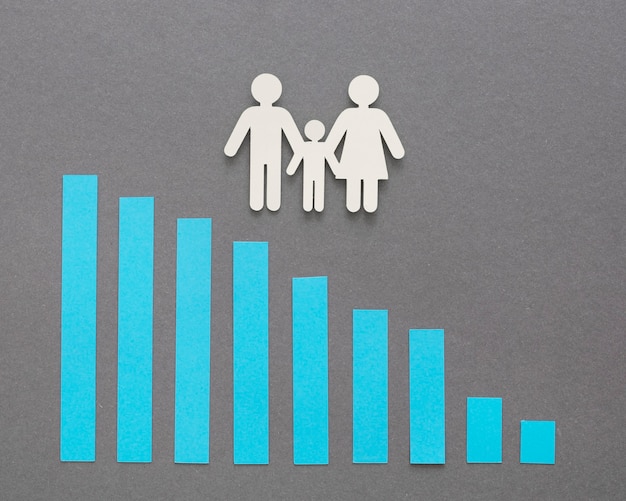Health Savings Account: Beat the April 15, 2026 Deadline for 2025 Tax Benefits

Health Savings Account Contribution Deadline Alert: Don’t Miss the April 15, 2026 Cut-Off for 2025 Tax Benefits for those looking to maximize their tax advantages and healthcare savings. Understanding these dates can significantly impact your financial planning.
Understanding the Health Savings Account Contribution Deadline Alert: Don’t Miss the April 15, 2026 Cut-Off for 2025 Tax Benefits is crucial for anyone aiming to optimize their healthcare spending and tax savings. This article breaks down everything you need to know to make the most of your HSA.
Understanding Health Savings Accounts (HSAs)
Health Savings Accounts (HSAs) are a powerful tool for managing healthcare costs while enjoying tax benefits. They offer a unique way to save for medical expenses, combining the advantages of both savings accounts and investment accounts.
HSAs are designed to work alongside high-deductible health plans (HDHPs). This combination allows individuals and families to take control of their healthcare spending, making informed decisions about their medical needs and setting aside funds to cover these costs.
Eligibility for an HSA
To be eligible for an HSA, you must meet specific requirements. Primarily, you need to be enrolled in a qualified high-deductible health plan (HDHP). This type of health plan typically has lower monthly premiums but higher deductibles compared to traditional health insurance plans.
Additionally, you can’t be covered by any other non-HDHP health insurance, including Medicare. You also cannot be claimed as a dependent on someone else’s tax return. Meeting these criteria ensures you are eligible to open and contribute to an HSA.
- Enroll in a qualified High-Deductible Health Plan (HDHP).
- Not be covered by other non-HDHP health insurance.
- Not be enrolled in Medicare.
- Not be claimed as a dependent on another person’s tax return.
Understanding these eligibility rules is the first step towards leveraging the benefits of a Health Savings Account. The April 15, 2026 deadline is particularly important for those wishing to claim tax benefits for the 2025 tax year.
In summary, Health Savings Accounts offer a comprehensive approach to managing healthcare expenses and taking advantage of tax benefits, provided you meet the eligibility criteria and adhere to the contribution deadlines.
Contribution Limits for 2025
Staying informed about the Health Savings Account (HSA) contribution limits for 2025 is crucial for effective financial planning and maximizing your tax advantages. These limits are set annually by the IRS and can impact how much you can save and invest in your HSA.
Understanding these limits ensures that you can take full advantage of the tax benefits associated with HSAs while avoiding potential penalties for exceeding the allowed contribution amounts.
Specific Contribution Amounts
For 2025, the contribution limits for HSAs are as follows: individuals can contribute up to \$3,850, while families can contribute up to \$7,750. These amounts are subject to change each year, so staying updated is essential.
In addition to these limits, there’s a catch-up contribution for those aged 55 and older. This allows individuals nearing retirement to contribute an extra \$1,000 annually, helping them boost their healthcare savings as they approach their senior years.

Keeping these specific amounts in mind will help you strategically plan your contributions and optimize your HSA benefits. Remembering the Health Savings Account Contribution Deadline Alert: Don’t Miss the April 15, 2026 Cut-Off for 2025 Tax Benefits ensures you claim these contributions on your tax return.
- Individuals: \$3,850 contribution limit.
- Families: \$7,750 contribution limit.
- Catch-up contribution (age 55+): Additional \$1,000.
Overall, knowing the exact contribution limits for 2025 is essential for maximizing your HSA’s benefits and making informed financial decisions. Be sure to stay updated on any changes to these limits.
The April 15, 2026 Deadline Explained
The April 15 deadline holds significant weight for taxpayers across the United States. This date represents the final opportunity to file your federal income tax return without incurring penalties. However, for HSA contributors, it carries additional importance.
Understanding the implications of this deadline ensures that you can make the most of your HSA contributions and claim relevant tax benefits for the 2025 tax year.
Why April 15 is Important for HSAs
While most tax-related deadlines fall on April 15, for HSAs, this date is particularly crucial because it marks the final day to make contributions for the previous tax year. Essentially, you have until April 15, 2026, to contribute to your HSA and still claim those contributions on your 2025 tax return.
This extended deadline provides flexibility for individuals and families who may need more time to assess their financial situation and make additional contributions to their HSAs. It also allows for last-minute tax planning to optimize savings and reduce taxable income.
The Health Savings Account Contribution Deadline Alert: Don’t Miss the April 15, 2026 Cut-Off for 2025 Tax Benefits provides an opportunity to fine-tune your financial strategy and maximize your HSA’s potential.
- Final day to contribute to your HSA for the previous tax year.
- Opportunity to claim contributions on your 2025 tax return.
- Allows for last-minute tax planning and optimization of savings.
Understanding the importance of the April 15 deadline is key to maximizing the financial advantages of your HSA. Mark your calendar and plan accordingly to take full advantage of this opportunity.
Tax Benefits of HSAs
One of the most appealing aspects of Health Savings Accounts is the significant tax advantages they offer. These benefits make HSAs a highly attractive tool for saving and investing in healthcare expenses, providing tax relief at various stages.
Understanding these tax advantages can help you make informed decisions about your healthcare spending and savings, potentially leading to substantial tax savings over time.

Triple Tax Advantage
HSAs offer a “triple tax advantage,” meaning that contributions are tax-deductible, earnings grow tax-free, and withdrawals for qualified medical expenses are also tax-free.
This triple tax benefit can significantly reduce your overall tax liability, making HSAs an incredibly efficient way to save for healthcare costs. The Health Savings Account Contribution Deadline Alert: Don’t Miss the April 15, 2026 Cut-Off for 2025 Tax Benefits is crucial for optimizing these advantages.
- Tax-deductible contributions reduce your taxable income.
- Earnings grow tax-free, increasing your savings over time.
- Withdrawals for qualified medical expenses are tax-free.
In summary, the tax benefits associated with HSAs are a major draw for individuals and families looking to save on healthcare costs while minimizing their tax burden. Understanding and utilizing these advantages can lead to significant financial gains.
How to Contribute to Your HSA
Contributing to your Health Savings Account (HSA) is a straightforward process, but it’s important to understand the steps involved to ensure your contributions are made correctly and on time. There are several methods for contributing to your HSA, each with its own benefits.
Knowing these methods can help you choose the most convenient and efficient way to contribute to your HSA, allowing you to maximize your savings and tax benefits.
Methods for Contributing
You can contribute to your HSA through various methods, including direct contributions via your bank account, payroll deductions through your employer, and transfers from other eligible accounts. Each method offers its own level of convenience and potential tax benefits.
Direct contributions are typically made online or through your HSA provider’s platform, allowing you to make contributions at any time. Payroll deductions, on the other hand, offer the advantage of pre-tax contributions, reducing your taxable income upfront.
The Health Savings Account Contribution Deadline Alert: Don’t Miss the April 15, 2026 Cut-Off for 2025 Tax Benefits applies regardless of the contribution method you choose.
- Direct contributions via your bank account.
- Payroll deductions through your employer.
- Transfers from other eligible accounts.
In conclusion, contributing to your HSA is a simple yet crucial step towards managing your healthcare expenses and maximizing your tax savings. Choose the method that best suits your needs and ensure you stay within the contribution limits.
Strategies for Maximizing Your HSA
Maximizing your Health Savings Account (HSA) involves more than just making regular contributions. It requires strategic planning and a comprehensive understanding of how to leverage the various benefits offered by HSAs. By employing effective strategies, you can optimize your savings, investments, and overall healthcare financial planning.
These strategies can help you make the most of your HSA, turning it into a powerful tool for both short-term healthcare expenses and long-term financial security.
Investment Options and Long-Term Growth
Many HSA providers offer investment options that allow you to grow your savings over time. Investing in stocks, bonds, and mutual funds can potentially yield higher returns compared to traditional savings accounts.
Consider allocating a portion of your HSA funds to investments, especially if you don’t anticipate needing all the funds for immediate healthcare expenses. This can help your savings grow significantly over the long term, providing a valuable resource for future medical needs.
The Health Savings Account Contribution Deadline Alert: Don’t Miss the April 15, 2026 Cut-Off for 2025 Tax Benefits encourages proactive management and strategic investment decisions.
- Invest a portion of your HSA funds for long-term growth.
- Choose investment options that align with your risk tolerance and financial goals.
- Regularly review and rebalance your investment portfolio.
Overall, maximizing your HSA requires a proactive approach that combines regular contributions with strategic investment decisions. By understanding and utilizing these strategies, you can transform your HSA into a powerful tool for financial security.
Common Mistakes to Avoid
While Health Savings Accounts (HSAs) offer numerous benefits, it’s essential to avoid common mistakes that can undermine their effectiveness. These errors can range from misunderstanding eligibility rules to mismanaging contributions and withdrawals.
Being aware of these pitfalls can help you navigate the complexities of HSAs and ensure that you’re maximizing their potential for both healthcare savings and tax benefits.
Over-Contributing and Incorrect Withdrawals
One of the most common mistakes is over-contributing to your HSA beyond the annual limits set by the IRS. This can lead to penalties and additional tax liabilities. Always be mindful of the contribution limits for your filing status (individual or family) and any catch-up contributions you may be eligible for.
Another frequent error is making incorrect withdrawals for non-qualified medical expenses. HSA funds should only be used for eligible medical, dental, and vision expenses. Using HSA funds for non-qualified expenses can result in taxes and penalties.
The Health Savings Account Contribution Deadline Alert: Don’t Miss the April 15, 2026 Cut-Off for 2025 Tax Benefits can be easily missed if you’re not careful.
- Avoid over-contributing beyond the annual limits.
- Use HSA funds only for qualified medical expenses.
- Keep accurate records of your contributions and withdrawals.
In summary, avoiding these common mistakes is crucial for maintaining the integrity and effectiveness of your Health Savings Account. Stay informed about the rules and regulations, and ensure you’re managing your HSA responsibly.
| Key Point | Brief Description |
|---|---|
| 🗓️ April 15, 2026 Deadline | Last day to contribute for 2025 tax benefits. |
| 💰 2025 Contribution Limits | Individuals: \$3,850; Families: \$7,750. |
| ✅ Eligibility | Must have a High-Deductible Health Plan (HDHP). |
| 💸 Tax Benefits | Triple tax advantage: deductible, tax-free growth, tax-free withdrawals. |
Frequently Asked Questions (FAQ)
▼
A Health Savings Account (HSA) is a tax-advantaged savings account that can be used to pay for qualified medical expenses. To be eligible, you must be enrolled in a qualified high-deductible health plan (HDHP).
▼
For 2025, the contribution limits are \$3,850 for individuals and \$7,750 for families. Those aged 55 and older can contribute an additional \$1,000 as a catch-up contribution.
▼
April 15, 2026, is the deadline to make HSA contributions for the 2025 tax year. This allows you to claim those contributions on your 2025 tax return, maximizing your tax benefits.
▼
Over-contributing to your HSA can result in penalties. It’s important to stay within the annual contribution limits to avoid these issues. You can withdraw the excess contributions before the tax deadline to avoid penalties.
▼
Qualified medical expenses include costs for medical, dental, and vision care that are not covered by insurance. This can include doctor visits, prescriptions, and some over-the-counter medications. Always check with the IRS for a comprehensive list.
Conclusion
Understanding the Health Savings Account Contribution Deadline Alert: Don’t Miss the April 15, 2026 Cut-Off for 2025 Tax Benefits ensures you maximize tax advantages and healthcare savings. By staying informed and planning strategically, you can leverage the power of HSAs for a financially secure future.





